Why Are Europe's Manufacturers Replacing Manual Handling with Pallet Inverters?
Are you constantly battling with production bottlenecks on your factory floor? It's a familiar problem. Manual handling of palletized goods is slow, physically demanding, and a major source of workplace injuries. The pressure mounts as you watch labor costs rise and safety regulations become stricter. You know there has to be a better way to manage these essential but time-consuming tasks without compromising the safety of your team or the integrity of your products. This challenge is a constant drain on resources and a barrier to achieving the smooth, efficient operation you envision. European manufacturers are now turning to a powerful, automated solution to solve this problem for good: the pallet inverter.
European manufacturers are replacing manual handling with pallet inverters to dramatically increase operational efficiency, improve worker safety by eliminating strenuous lifting, and significantly reduce costs. These costs include expenses related to labor, product damage, and complex pallet management, making pallet inverters a strategic investment in productivity and safety.
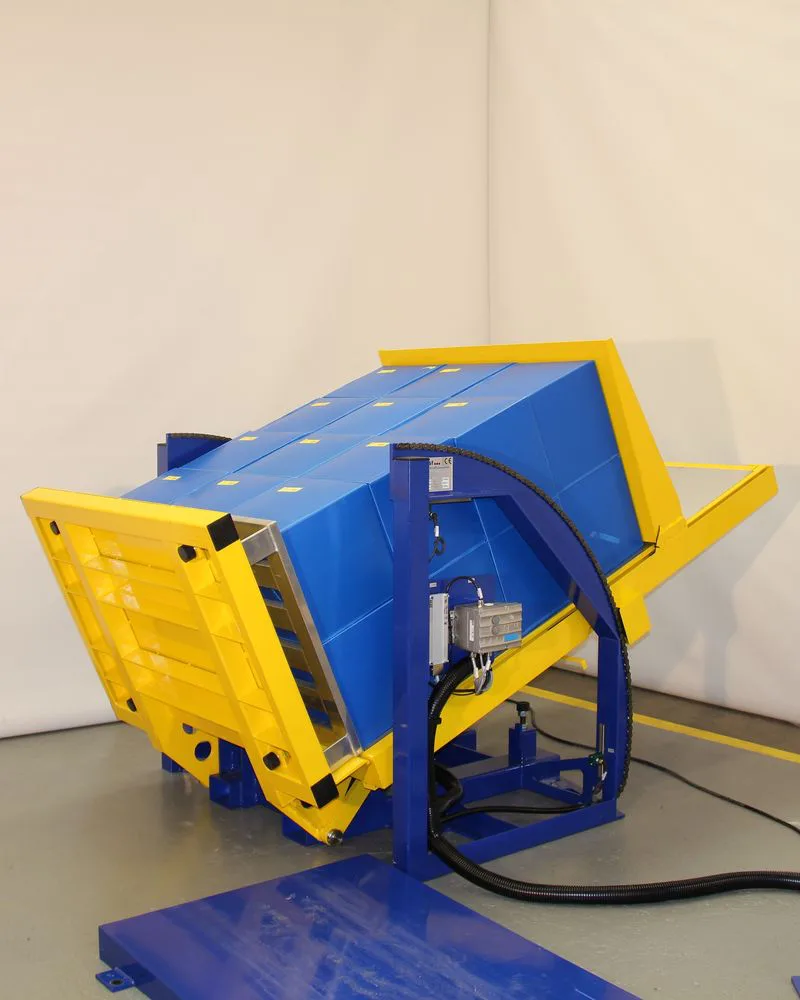
This shift is not just a passing trend. It's a calculated strategic decision driven by clear, measurable benefits. As an engineer who has spent my life on the factory floor and building solutions for companies just like yours, I've seen firsthand how the right piece of equipment can transform an entire operation. The move towards pallet inverters in Europe is a lesson in smart automation that has implications for manufacturers worldwide. Let's break down the specific reasons why this technology is becoming an indispensable part of the modern factory.
How Do Pallet Inverters Directly Boost Operational Efficiency?
Does your production line ever feel like it's stuck in first gear? You see workers and forklifts tied up with the simple task of swapping a pallet, creating a logjam that ripples through your entire workflow. This is a frustrating reality for many plant managers. Every minute spent on manual restacking is a minute lost from your core business, hurting your output and your ability to meet deadlines. You feel the pressure to hit a 95% uptime goal, but these logistical hurdles make it seem impossible. The solution lies in streamlining that bottleneck with automation designed for the task.
Pallet inverters directly boost operational efficiency by automating the transfer of goods between pallets, a process that takes less than a minute. This compares to the many minutes, or even hours, required for manual restacking. This automation dramatically cuts down cycle times and frees up valuable labor and forklift capacity to be used on other, more productive tasks.
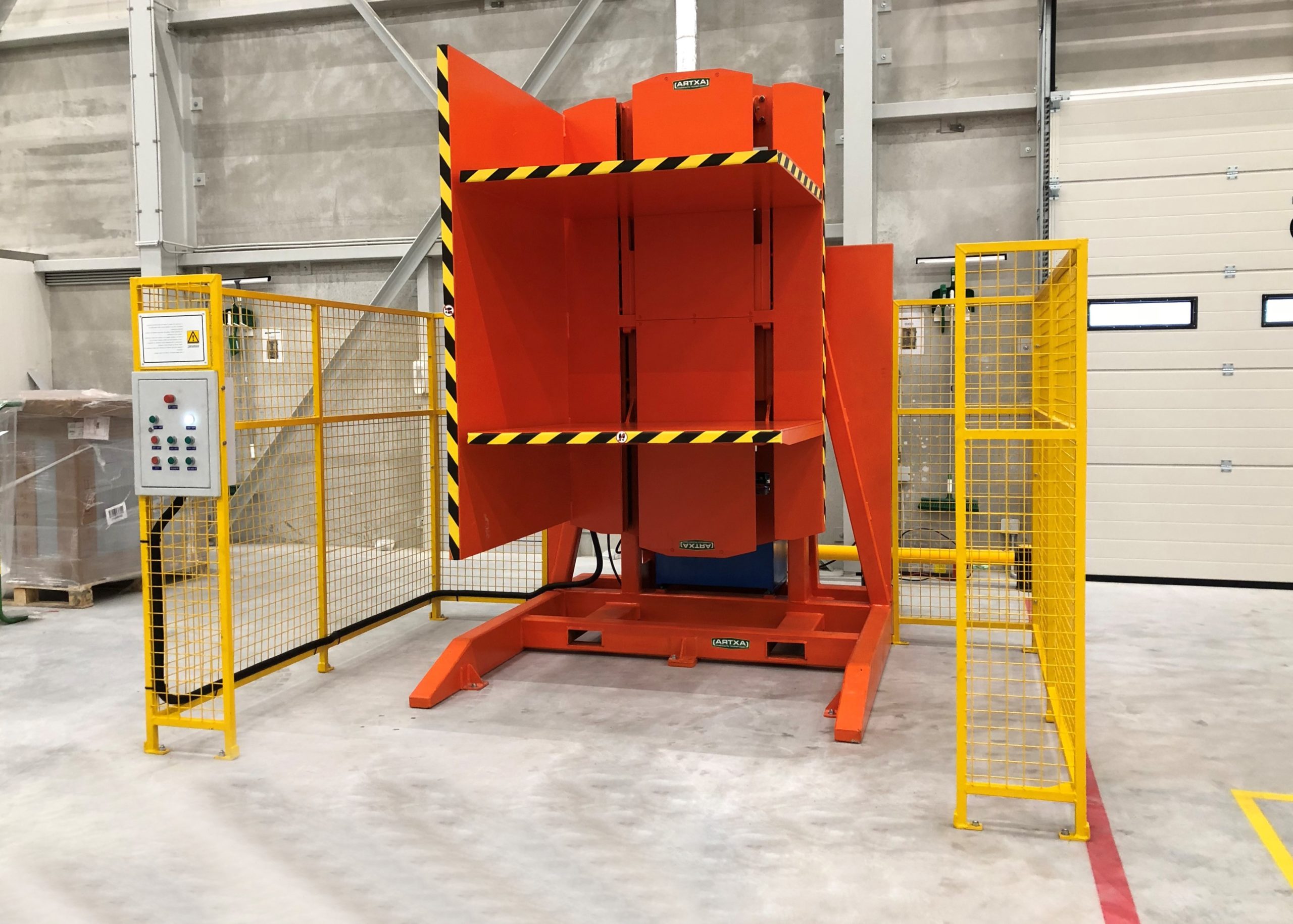
From Bottleneck to Fast Lane
I remember visiting a client with a large distribution center. They had a team of four workers whose entire job was to manually transfer boxes from incoming wooden pallets to their internal plastic pallets. It was a constant bottleneck. The process was slow, taking them about 20 minutes per pallet, and it exposed their products to potential damage with every box they handled. When we installed a single pallet inverter, the change was immediate. The same task that took four people 20 minutes could now be done by one operator in under 60 seconds. This didn't just speed up their receiving dock; it had a positive effect on the entire facility. Inventory was logged and put away faster, and the production lines were fed with materials without delay.
Quantifying the Efficiency Gains
When you look at the numbers, the argument becomes even clearer. For a business leader like you, Javier, who analyzes every investment for its return, the data speaks for itself. Let's compare the two methods in a typical scenario.
| Metric | Manual Handling | With Pallet Inverter | Improvement |
|---|---|---|---|
| Time per Pallet Load | 15 - 30 minutes | < 1 minute | >95% reduction |
| Labor Required | 2 - 4 workers | 1 operator | 50-75% reduction |
| Forklift Occupancy | 10 - 20 minutes | 2 - 3 minutes | ~85% reduction |
| Process Consistency | Variable, depends on team | Consistent every cycle | 100% predictable |
These are not just theoretical numbers. These are the real-world gains my clients have achieved. For a steel mill owner like you, think about transferring heavy wire coils or stacked steel sheets. Manually handling such items is not just inefficient, it's extremely risky. An automated solution provides speed and predictability, which are the foundations of reaching that 95% capacity utilization goal.
Integration Beyond the Machine
A pallet inverter is more than a standalone machine; it's a key node in a fully automated system. Modern inverters can be integrated directly into conveyor lines, communicating with your Manufacturing Execution System (MES) or Warehouse Management System (WMS). When a pallet is inverted, the system can log the action, track the new pallet ID, and update inventory status in real-time. This is a crucial step in achieving the full production visualization you're aiming for. It turns a simple logistical task into a data-rich event that improves your overall plant intelligence. This is the kind of forward-thinking integration that separates market leaders from the rest.
What Are the Safety and Ergonomic Advantages in a Modern European Factory?
Have you ever had to deal with the fallout from a serious workplace injury? A valued employee is hurt, production is disrupted, and a mountain of paperwork lands on your desk. It’s a situation every factory owner dreads. In addition to the human cost, the financial and reputational risks are enormous, especially with the strict occupational health and safety regulations found across Europe. You strive to build a culture of safety, but manual handling of heavy loads remains a persistent, high-risk problem. The best way to solve this problem is to engineer the hazard out of the process entirely.
The primary safety advantage of a pallet inverter is the complete elimination of manual lifting, bending, and twisting associated with handling heavy pallet loads. This directly mitigates the risk of musculoskeletal injuries (MSIs), such as back sprains and strains. These are consistently among the most common and costly injuries in any industrial environment.
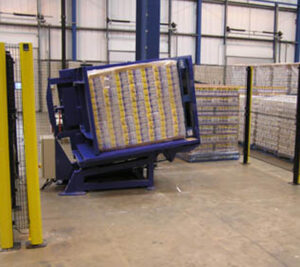
The True Cost of a Single Injury
Early in my career, I worked as an engineer on the factory floor. I saw firsthand the physical toll that manual labor took on good, hardworking people. I remember a veteran forklift driver, a man who had been with the company for over 20 years, who suffered a career-ending back injury while helping to restack a shifted load. The direct costs, including medical bills and compensation, were substantial. But the indirect costs were even greater. We lost an experienced team member, morale dipped, and his team's productivity suffered for months. This experience made me passionate about designing machines that protect people. A pallet inverter isn't just a piece of steel; it's a commitment to your team's well-being.
Meeting and Exceeding Global Safety Standards
In Europe, compliance with standards like the EU Machinery Directive is not optional. Machines must be designed with safety as a core principle. Pallet inverters achieve this through multiple layers of protection. They are enclosed in safety caging to prevent anyone from entering the operational area. Light curtains create an invisible barrier that immediately stops the machine if crossed. And dual-channel, redundant safety circuits ensure that the machine fails in a safe state. As a manufacturer, we don't just aim to meet these standards; we aim to exceed them. Providing a safe work environment is the most fundamental responsibility of any industrial leader.
| Hazard Associated with Manual Pallet Handling | Manual Risk Level | How a Pallet Inverter Eliminates the Risk |
|---|---|---|
| Lifting heavy, awkward items | High | The machine does all the lifting and rotating. |
| Repetitive bending and twisting | High | The operator stands upright at a control panel. |
| Goods falling from height during restacking | Moderate | The load is securely clamped throughout the entire cycle. |
| Finger and hand pinch points | Moderate | The process is fully automated within a guarded enclosure. |
Building a Culture of Safety
By investing in equipment like pallet inverters, you send a clear message to your employees: their safety is your top priority. This builds trust and fosters a positive safety culture where people feel valued and protected. This, in turn, leads to higher engagement, better attention to detail, and lower accident rates across the board. It is a virtuous cycle that starts with making the right strategic decisions about the equipment you bring into your plant.
How Do Pallet Inverters Contribute to Cost Reduction and ROI?
You're constantly looking at your operational budget, trying to find ways to trim costs without sacrificing quality or safety. Every line item is under scrutiny, from labor and equipment maintenance to raw material and consumable spending. You see the costs of damaged products written off in your reports and the surprisingly high expense of managing your pallet inventory. These individual costs add up, slowly eroding the profit margin you work so hard to build. A strategic investment should directly attack these costs and deliver a clear, predictable return.
Pallet inverters contribute to significant cost reduction by targeting three key areas: they lower direct labor expenses, they drastically minimize product damage during handling, and they enable smarter, more cost-effective pallet management strategies. The combined savings often result in a return on investment (ROI) in less than 18 months.
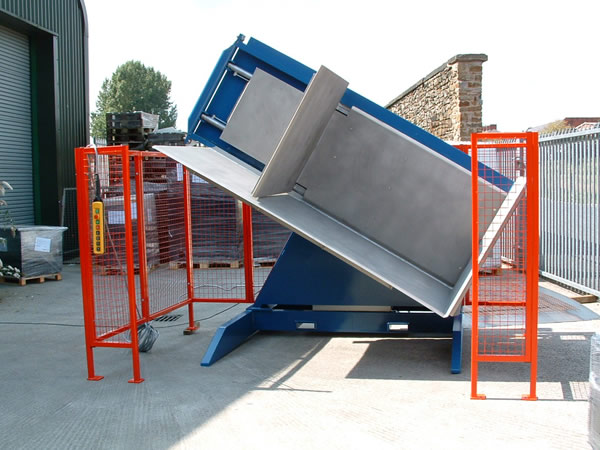
Breaking Down the Return on Investment
For a pragmatic business owner like you, Javier, the decision to invest must be backed by solid numbers. A pallet inverter is not just an expense; it's a cost-saving engine. Let's create a simple framework to see how quickly it can pay for itself.
| Cost Center | Example Annual Cost (Manual) | Example Annual Cost (With Inverter) | Annual Savings |
|---|---|---|---|
| Labor (2 workers @ €20/hr, 1 hr/day) | €10,400 | €650 (1 operator, 5 min/day) | €9,750 |
| Product Damage (0.5% of €5M goods handled) | €25,000 | €2,500 (Reduced to 0.05%) | €22,500 |
| Pallet Management (Switching 2,000 pallets) | €30,000 (Using rental pallets) | €10,000 (Using in-house pallets) | €20,000 |
| Total Savings | €52,250 |
This is a conservative example. For a high-throughput operation, these savings can be much, much higher. Your goal of reducing overall operating costs by 8% is ambitious, but it is achievable by implementing targeted automation like this. The pallet inverter tackles labor, waste, and supply chain costs simultaneously.
The Strategic Power of Pallet Control
One of the biggest hidden costs in logistics is pallet rental. Companies like CHEP or PECO provide high-quality pallets that are required by many large retailers, but they come at a premium. A pallet inverter gives you strategic control over these costs. You can receive goods on cheap, one-way pallets, transfer the load to your own durable, internal-use pallets (like the steel ones in your mill), and only move the finished product onto an expensive rental pallet at the final moment before shipping. This simple change in process can save a company hundreds of thousands of dollars a year. I worked with a food processing client who was deep in the pallet rental ecosystem. By installing two inverters at their receiving and shipping docks, they gained complete control. They cut their annual pallet rental fees by over 60% and saw a full return on their investment in just 11 months. This is not just cost-cutting; it's smart, strategic management of your supply chain.
What Are the Specific Applications Where Pallet Inverters Shine in Manufacturing?
You might be thinking, "This technology sounds impressive, but is it suitable for my specific products?" It's a valid question. You handle heavy, rugged materials like steel coils, but you also ship finished goods that need careful handling. It's natural to be cautious before investing in a new system, wondering if it can truly adapt to your unique operational needs. The fear is that you will invest in a one-size-fits-all solution that doesn't quite fit anyone perfectly.
The reality is that pallet inverters are incredibly versatile machines. They excel in any application that requires a load to be turned or a pallet to be exchanged. From heavy industry to sterile pharmaceutical environments, their use is defined by the problem they solve: safely and efficiently separating a product stack from its pallet.
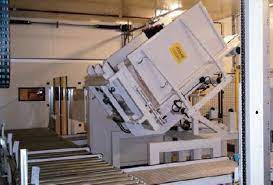
From Your Steel Mill to a Cleanroom
The fundamental principle of inverting a load applies across a surprisingly wide range of industries. The key is to match the machine's design—its clamping pressure, opening size, and loading method—to the specific product. This is where partnering with an experienced engineer is crucial.
| Industry | Common Application | Key Benefit Delivered |
|---|---|---|
| Steel & Metals | Transferring heavy coils or sheets from a wood shipping pallet to a robust, in-house steel pallet. | Safety & Damage Prevention. Eliminates the risk of pallet failure under extreme weight. |
| Food & Beverage | Swapping goods from a wood pallet (risk of splinters, contamination) to a sanitized plastic or metal pallet before entering the production area. | Hygiene & Compliance. Meets strict HACCP and food safety standards. |
| Pharmaceuticals | Transferring raw materials from external pallets to sterilized cleanroom-grade pallets. | Sterility & Contamination Control. Protects product integrity and meets regulatory demands. |
| Warehousing | Quickly replacing a broken or damaged pallet at the bottom of a stable stack without having to unstack and restack the entire load by hand. | Efficiency & Product Recovery. Saves hours of labor and salvages the load. |
| Cold Storage | Moving goods from standard wood pallets to specialized plastic or aluminum freezer pallets that won't absorb moisture or become brittle at low temperatures. | Operational Integrity. Prevents pallet-related issues inside expensive-to-operate cold zones. |
A Personal Story of Customization
As an engineer and factory owner, I believe in providing a "total solution." This means we don't just sell a machine from a catalog. We start by understanding the client's unique challenge. One of my most rewarding projects was for a steel mill, very similar to yours, Javier. They needed to handle 15-ton steel coils. A standard pallet inverter would be crushed. We had to completely redesign the machine from the ground up. We engineered a heavy-duty frame, used powerful hydraulic cylinders with precision pressure control to grip the coil without damaging it, and integrated it with their overhead crane loading system. It was a complex engineering challenge, but when we saw it operating flawlessly, improving their safety and efficiency, it reaffirmed my mission. That is what a true strategic partner does: they listen, they design, and they deliver a solution that works for your specific problem. This is how we help our clients succeed.
Conclusion
European manufacturers embrace pallet inverters for enhanced safety, efficiency, and significant cost savings. This technology is a strategic investment in a more productive, secure, and profitable future for any operation.


